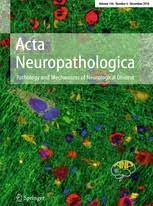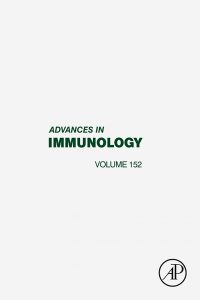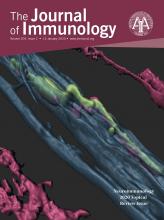Recent Publications and Reviews
|
C5aR1 antagonism suppresses inflammatory glial responses and alters cellular signaling in an Alzheimer’s disease mouse model.
|

The Role of Complement in Synaptic Pruning and Neurodegeneration (2021) |

The good, the bad, and the opportunities of the complement system in neurodegenerative disease (2020) |
|
Complement-Mediated Events in Alzheimer’s Disease: Mechanisms and Potential Therapeutic Targets |
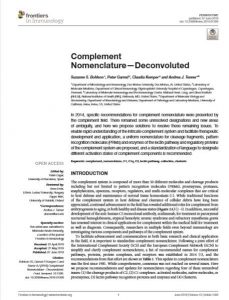 Complement Nomenclature—Deconvoluted Complement Nomenclature—DeconvolutedBohlson SS, Garred P, Kemper C, and Tenner AJ |
|
|
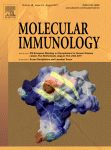 Complement In The Brain Complement In The BrainVeerhuis R, Nielsen HM, and Tenner AJ |
 Central Nervous System Diseases and Inflammation Central Nervous System Diseases and InflammationThe Complement System in the CNS: Thinking again Andrea J. Tenner and Karntipa Pisalyaput |
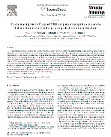 Complement proteins C1q and MBL are pattern recognition molecules that signal immediate and long-term protective immune functions. Complement proteins C1q and MBL are pattern recognition molecules that signal immediate and long-term protective immune functions.Bohlson SS, Fraser DA, Tenner AJ |
Publications 1972 to 2022
- Gomez-Arboledas A, Carvalho K, Balderrama-Gutierrez G, Chu SH, Liang HY, Schartz ND, Selvan P, Petrisko TJ, Pan MA, Mortazavi A, Tenner AJ (2022) C5aR1 antagonism alters microglial polarization and mitigates disease progression in a mouse model of Alzheimer’s disease. Acta Neuropathol Commun 10:116.
- Carvalho K, Schartz ND, Balderrama-Gutierrez G, Liang HY, Chu SH, Selvan P, Gomez-Arboledas A, Petrisko TJ, Fonseca MI, Mortazavi A, Tenner AJ (2022) Modulation of C5a-C5aR1 signaling alters the dynamics of AD progression. J Neuroinflammation 19:178.
- Petrisko, T.J., Gomez-Arboledas, A. & Tenner, A.J. Chapter Three – Complement as a powerful “influencer” in the brain during development, adulthood and neurological disorders. In: Alt, F.W. & Murphy, K.M. (eds). Advances in Immunology, vol. 152. Academic Press, 2021, pp 157-222.
- Holden SS, Grandi FC, Aboubakr O, Higashikubo B, Cho FS, Chang AH, Osorio Forero A, Morningstar AR, Mathur V, Kuhn LJ, Suri P, Sankaranarayanan S, Andrews-Zwilling Y, Tenner AJ, Luthi A, Aronica E, Corces MR, Yednock T, Paz JT. Complement factor C1q mediates sleep spindle loss and epileptic spikes after mild brain injury. Science 373(6560);eabj2685. 2021
- Gomez Arboledas A, Acharya MM, and Tenner AJ. The Role of Complement in Synaptic Pruning and Neurodegeneration. Immunotargets and Therapy. 10:373-386. 2021
- Schartz ND and Tenner AJ. The good, the bad, and the opportunities of the complement system in neurodegenerative disease. J Neuroinflammation. 17:354. 2020
- Complement-Mediated Events in Alzheimer’s Disease: Mechanisms and Potential Therapeutic Targets. J Immunol. 204(2):306-315. 2020
- Complement Nomenclature-Deconvoluted. Front Immunol. 10:1308. 2019
- New tricks for an ancient system: Physiological and pathological roles of complement in the CNS. Mol Immunol. 102:3-13. 2018
- Prevention of C5aR1 signaling delays microglial inflammatory polarization, favors clearance pathways and suppresses cognitive loss.Mol Neurodegener. 18;12(1):66. 2017
- C1q: A fresh look upon an old molecule. Mol Immunol. 89:73-83. 2017
- Cell-specific deletion of C1qa identifies microglia as the dominant source of C1q in mouse brain. J Neuroinflammation. 14(1):48. 2017
- C5a Increases the Injury to Primary Neurons Elicited by Fibrillar Amyloid Beta. ASN Neuro. 9(1):1759091416687871. 2017
- Analysis of the Putative Role of CR1 in Alzheimer’s Disease: Genetic Association, Expression and Function. PLoS One. 11(2):e0149792. 2016
- Complement protein C1q bound to apoptotic cells suppresses human macrophage and dendritic cell-mediated Th17 and Th1 T cell subset proliferation. J Leukoc Biol. 97(1):147-60. 2015
- Complement modulation of T cell immune responses during homeostasis and disease. J Leukoc Biol. 96(5):745-56. 2014
- Purification of Human Monocytes and Lymphocyte Populations by Counter Current Elutriation- A Short Protocol. Bio Protoc. 3(23):e981. 2013
- C1q Binding to and Uptake of Apoptotic Lymphocytes by Human Monocyte-derived Macrophages. Bio Protoc. 3(17):e877. 2013
- Complement activation fragment C5a receptors, CD88 and C5L2, are associated with neurofibrillary pathology. J Neuroinflammation. 10:25. 2013
- Benoit ME, Hernandez MX, Dinh ML, Benavente F, Vasquez O, Tenner AJ. C1q-induced LRP1B and GPR6, expressed early in AD mouse models, are essential for the C1q-mediated protection against amyloid beta (Aβ) neurotoxicity. J Biol Chem. 288: 654-665. 2013
- Cribbs DH, Berchtold NC, Perreau V, Coleman PD, Rogers J, Tenner AJ, Cotman CW. Extensive innate immune gene activation accompanies brain aging, increasing vulnerability to cognitive decline and neurodegeneration: a microarray study. J Neuroinflammation. 9:179. 2012
- Benoit ME, Clarke EV, Morgado P, Fraser DA, Tenner AJ. Complement protein C1q directs macrophage polarization and limits inflammasome activity during the uptake of apoptotic cells. J Immunol. 188(11):5682-93. 2012
- Linnartz B, Kopatz J, Tenner AJ, Neumann H. Sialic acid on the neuronal glycocalyx prevents complement C1 binding and complement receptor-3-mediated removal by microglia. J Neurosci. 32(3):946-52. 2012
- Veerhuis R, Nielsen HM, Tenner AJ. Complement in the brain. Mol Immunol. (14):1592-603. 2011
- Benoit ME, Tenner AJ. Complement protein C1q-mediated neuroprotection is correlated with regulation of neuronal gene and microRNA expression. J Neurosci. 231(9):3459-69. 2011
- Fonseca MI, Chu SH, Berci AM, Benoit ME, Peters DG, Kimura Y, Tenner AJ. Contribution of complement activation pathways to neuropathology differs among mouse models of Alzheimer’s disease. J Neuroinflammation. 8(1):4. 2011
- Fraser DA, Tenner AJ. Innate immune proteins C1q and mannan-binding lectin enhance clearance of atherogenic lipoproteins by human monocytes and macrophages. J Immunol. 185(7):3932-9. 2010.
- Zekavat G, Mozaffari R, Arias VJ, Rostami SY, Badkerhanian A, Tenner AJ, Nichols KE, Naji A, Noorchashm H. A novel CD93 polymorphism in non-obese diabetic (NOD) and NZB/W F1 mice is linked to a CD4+ iNKT cell deficient state. Immunogenetics. 62(6):397-407. 2010.
- Ager RR, Fonseca MI, Chu SH, Sanderson SD, Taylor SM, Woodruff TM, Tenner AJ. Microglial C5aR (CD88) expression correlates with amyloid-beta deposition in murine models of Alzheimer’s disease. J Neurochem. 113(2):389-401.2010.
- Fraser DA, Pisalyaput K, Tenner AJ. C1q enhances microglial clearance of apoptotic neurons and neuronal blebs, and modulates subsequent inflammatory cytokine production. J Neurochem. 112(3):733-43. 2010.
- Fraser DA, Laust AK, Nelson EL, Tenner AJ. C1q differentially modulates phagocytosis and cytokine responses during ingestion of apoptotic cells by human monocytes, macrophages, and dendritic cells. J Immunol. 183(10):6175-85. 2009.
- Woodruff TM, Ager RR, Tenner AJ, Noakes PG, Taylor SM. The role of the complement system and the activation fragment C5a in the central nervous system. Neuromolecular Med. 12(2):179-92. 2009.
- Fonseca MI, Ager RR, Chu SH, Yazan O, Sanderson SD, LaFerla FM, Taylor SM, Woodruff TM, Tenner AJ. Treatment with a C5aR antagonist decreases pathology and enhances behavioral performance in murine models of Alzheimer’s disease. J Immunol. 183(2):1375-83, 2009
- Klos A, Tenner AJ, Johswich KO, Ager RR, Reis ES, Köhl J. The role of the anaphylatoxins in health and disease. Mol Immunol. 2009
- Zhou, J., Fonseca,, M.I., Pisalyaput, K. and Tenner, A.J. Complement C3 and C4 expression in murine mouse models of Alzheimer’s Disease. J. Neurochem. 106: 2080-2092, 2008.
- Alexander, J.J., Anderson A.J., Barnum S.R., Stevens B., Tenner A.J., The Complement Cascade: Yin-yang in Neuroinflammation: Neuro-protection and –degeneration. J. Neurochem.107:1169-87, 2008.
- Li,M., Ager, R.R., Fraser, D.A., Tjokro, N.O. and Tenner, AJ., Development of a Humanized C1q A Chain Knock-in Mouse: Assessment of Antibody Independent ß-Amyloid Induced Complement Activation. Mol. Immunol. 45:3244-3252, 2008.
- Lillis, A.P., Greenlee, M.C., Mikhailenko, I., Pizzo, S.V., Tenner, A.J., Strickland, D.K.and Bohlson, S.S. The low-density lipoprotein receptor-related protein (LRP/CD91) is not required for the C1q-triggered enhancement of phagocytosis in murine macrophages. J.Immunol. 181:364-373, 2008.
- Fraser, D.A. and Tenner, A.J. Directing an appropriate immune response: The role of defense collagens and other soluble pattern recognition molecules. Current Drug Targets. 9(2), 2008.
- Pisalyaput, K. and Tenner, A.J., Complement component C1q inhibits β-amyloid and serum amyloid P induced neurotoxicity via caspase and calpain-independent mechanisms. J. Neurochem. 104(3):696-707, 2008.
- Tenner, A.J. and Pisalyaput, K., “The Complement System in the CNS: Thinking again.” In Neuroinflammation and Disease, Eds: Thomas E. Lane, Monica Carson, Connie Bergmann, Tony Wyss-Coray, Springer, (Invited Review), In Press, 2007.
- Fraser, D.A., Arora, M., Bohlson, S.S., Lozano, E., and Tenner, A.J., Generation of Inhibitory NFkB complexes and pCREB correlates with the anti-inflammatory activity of complement protein C1q in human monocytes. J. Biol. Chem. 282:7360-7367, 2007.
- Bohlson, S.S., Fraser, D.A., and Tenner, A.J. Complement Proteins C1q and MBL are Pattern Recognition Molecules that Signal Immediate and Long Term Protective Immune Functions. Mol. Immunol. 44:33-43, 2007. (Invited Review)
- Chong, Y.H., Shin, Y.J., Lee, E.O., Kayed, R., Glabe, C.G., and Tenner, A.J. ERK1/2 activation mediates oligomeric ABeta-induced neurotoxicity via caspase-3 activation and Tau cleavage in rat organotypic hippocampal slice cultures. J. Biol. Chem.281:20315-20325, 2006.
- Tenner, A.J. and Fonseca, M.I. The Double Edged Flower: Roles of Complement Protein C1q in Neurodegenerative Diseases, Book Chapter, Advances in Experimental Medicine and Biology, Lambris, J.D. (Ed.), Springer, Vol. 586: 153-176, 2006.
- Fraser, D.A., Bohlson, S.S., Jasinskiene, N., Rawal, N., Palmerini, G., Ruiz, S., Rochford, R., and Tenner, A.J., C1q and MBL, components of the innate immune system, influence monocyte cytokine expression, J. Leuk. Biol. 80:107-116, 2006.
- Osmers, I., Szalai, A. J., Tenner, A.J., and Barnum, S.R. Complement in BuB/BnJ Mice Revisited: Serum C3 Levels and Complement Opsonic Activity are Not Elevated, Mol. Immunol. 43:1722-5. 2006.
- Zhou, J., M. I. Fonseca, R. Kayed, S. D. Webster, I. Hernandez, O.Yazan, D. H. Cribbs, C.G. Glabe, and A. J. Tenner, Novel Aß peptide immunogens modulate plaque pathology and inflammation in a murine model of Alzheimer’s Disease, J. Neuroinflammation 2:28, 2005.
- Bohlson, S.S., Silva, R., Fonseca, M. and Tenner, A.J. CD93 is rapidly shed from the surface of human myeloid cells and the soluble form is detected in human plasma, J. Immunol.175:1239-1247, 2005.
- Fan, R. and Tenner, A.J. Differential regulation of Aß42-induced neuronal C1q synthesis and microglial activation. J. Neuroinflammation 2: 1-13, 2005.
- Zhang, M., Bohlson, S. S., Dy, M., and Tenner, A.J. Modulated Interaction of ERM protein, Moesin, with CD93. Immunology 115:63-73, 2005.
- Bohlson, S.S., Zhang, M., Ortiz, C.E. and Tenner, A.J. CD93 interacts with the PDZ domain-containing adaptor protein GIPC: implications in the modulation of phagocytosis J. Leuk. Biol. 77: 80-89, 2005.
- Li,M., Pisalyaput, K., Galvan, M., and Tenner, A.J., MCSF and IFN Trigger Distinct Mechanisms for Augmentation of Aß-Induced Microglia Mediated Neurotoxicity, J. Neurochem. 91:623-633, 2004.
- Fonseca, M.I., Zhou, J., Botto, M., and Tenner, A.J. Absence of Complement protein C1q leads to less neuropathology in transgenic mouse models of Alzheimer’s Disease., J. Neuroscience 24: 6457-6465, 2004.
- Fonseca, M.I,, Kawas, C.H., Troncoso, J.C., and Tenner, A.J., Neuronal localization of C1q in preclinical Alzheimer’s Disease. Neurobiology of Disease 15:40-46, 2004.
- Fan, R. and Tenner, A.J., Complement C1q expression induced by A beta in rat hippocampal organotypic slice cultures. Exp. Neurology 185:241-253, 2004.
- Maruyama, H., Galvan, M., Waffarn, F., and Tenner, A. J., Human cord blood leukocyte innate immune responses to defense collagens. Ped. Research 54:724-731, 2003.
- Park, M., Tenner, A. J., Cell Surface Expression of C1qRP/CD93 is Stabilized by O-Glycosylation. J. Cell. Physiol. 196:512-522, 2003.
- Danet, G. H., Luongo, J., Butler G., Lu, M. M., Tenner, A. J., Simon, M. C., Bonnet, D. A., C1qRp defines a new human stem cell population with haematopoietic and hepatic potential. PNAS 99: 10441-10445, 2002.
- Tenner, A. J. Complement in Alzheimer’s Disease: Opportunities for Modulating Protective and Pathogenic Events. Neurobiology of Aging, 22:849-861, 2001.
- Jack, D. L., Read, R. C., Tenner, A. J., Frosch, M., Turner, M. W., Klein, N. J., Mannose-binding lectin regulated the inflammatory response of human professional phagocytes to Neisseria meningitidis serogroup B. J. of Infectious Diseases 184: 1152-1162, 2001.
- Arora, M., Munoz, E., Tenner, A. J., Identification of the site on MBL critical for triggering enhancement of Phagocytosis. J. Biol. Chem. 276: 43087-43094, 2001.
- Tenner, A.J. and Webster, S.D., Complement-mediated injury and inflammation in the pathogenesis of Alzheimer’s Disease. Book chapter, in Inflammatory Events in Neurodegeneration, S.C. Bondy and A. Campbell, ed, Prominent Press, Scottsdale, AZ, pp. 120-138, 2001.
- Webster,S.D., Galvan, M.D.,Ferran, E., Garzon-Rodriguez, W., Glabe, C.G., Tenner, A.J., Antibody-mediated phagocytosis of Aβ in microglia. J. Immunol., 166:7496-7503, 2001.
- Head, E., Azizeh, B.Y., Lott, I.T., Tenner, A.J., Cotman, C.W. and Cribbs, D.H., “Complement association with neurons and beta-amyloid deposition in the brains of aged individuals with Down syndrome”. Neurobiology of Disease, 8: 252-265, 2001.
- Fonseca, M.I., Carpenter, P.M., Park, M.P., Palmarini, G. Nelson, E. L. and Tenner, A.J. C1qRP, a myeloid receptor in blood, is predominantly expressed on endothelial in human tissue. J. Leukoc. Bio. 70:793-800, 2001.
- Matsuoka, Y., Picciano, M., Malester, B., LaFrancois, J., Zehr,C., Daeschner, J.M., Olschowka, J.A., Fonseca, M.I., O’Banion, K.M., Tenner, A.J., Lemere, C.A., Duff, K. Inflammatory responses to amyloidosis in a transgenic mouse model of Alzheimer’s Disease. Am. J. Path., 158: 1345-1354 2001.
- Yokota, T., Oritani, K., Takahashi, I., Ishikawa, J., Matsuyama, A., Ouchi, N., Kihara, S., Funahashi, T., Tenner, A.J., Tomiyama, Y., and Matsuzawa, Y. Adiponectin, a novel member of soluble defense collagens, negatively regulates the growth of myelo-monocytic progenitors and the functions of macrophages. Blood, 96:1723-1732, 2000.
- Kim, T.S., Park, M., Nepomuceno, R.R., Palmarini, G., Winokur, S., Cotman,C. A., Bengtsson, U., Tenner, A.J. Characterization of the murine homolog of C1qRP: Identical cellular expression pattern, chromosomal location and functional activity of the human and murine C1qRP . Mol. Immunol. 37: 377-389, 2000.
- Azizeh, B.Y., Head, E., Ibrahim, M.A., Torp, R., Tenner, A.J., Kim,R., Lott, I.T., and Cotman, C.W., Molecular dating of senile plaques in the brains of individuals with Down Syndrome and in Aged Dogs. Experimental Neurology 163:111-122, 2000.
- Eggleton, P., Tenner, A.J., Reid, K.B.M., C1q Receptors, Clin. Exp. Immunol. 120: 406-412, 2000.
- Webster, S.D., Yang, A., Margol, L., Glabe, C.G., and Tenner, A.J. Complement component C1q modulates the phagocytic behavior of microglia. Experimental Neurology 161:127-138, 2000.
- Webster, S.D., Park, M., Fonseca, M.I. and Tenner, A.J. Structural and functional evidence for microglial expression of C1qRP, the C1q receptor that enhances phagocytosis, J. Leuk. Biol. 67:109-116, 2000.
- Tenner, A.J. C1qRP, in The Complement Factsbook, edited by B. Morley and M.Walport, Academic Press, pg. 176-179, 2000.
- Huang, J., Kim, L.J., Mealey, R., Marsh, H.C., Zhang, Y., Tenner, A.J., Connolly, E.S., Pinsky, D. J. , Neuronal Protection in stroke by an sLex-glycosylated complement inhibitor protein. Science 285: 595-599, 1999.
- Ruiz, S., Henschen-Edman, A. H., Nagase, H. and Tenner, A.J. Digestion of C1q collagen like domain with matrix metalloproteinases, MMP 1, 2, 3 and 9, further defines the sequence involved in the stimulation of neutrophil superoxide production, J. Leuk. Biol. 66:416-422, 1999.
- Tenner, A.J., Membrane receptors for soluble defense collagens. Cur. Op. In Immunol. 11:34-41, 1999.
- Nepomuceno, R.R., Ruiz, S., Park, M. and Tenner, A.J. C1qRP is a Heavily O-glycosylated Cell Surface Protein Involved in the Regulation of Phagocytic Activity. J. Immunol. 162: 3583-3589, 1999.
- Webster, S.D., Tenner, A.J., Poulos, T.L. and Cribbs, D.H., Mouse C1q A-chain sequence alters β-amyloid-induced complement activation. Neurobiology of Aging 20: 297-304,1999.
- Fonseca, M.I., Head, E. Velazquez, P., Cotman, C.W. and Tenner, A.J. The presence of isoaspartic acid in ß-amyloid plaques indicates plaque age. Experimental Neurology 157:277-288, 1999.
- Eggleton, P., Reid, K.B.M., and Tenner, A.J. C1q, how many functions? How many receptors? Trends in Cell Biology 8: 428-43, 1998.
- Tenner, A.J. C1q Receptors: Regulating specific functions of phagocytic cells. Immunobiology 199(2):250-264, 1998. (Invited review).
- Nepomuceno, R.R. and Tenner, A.J. C1qRP, the C1q Receptor That Enhances Phagocytosis, Is Detected Specifically in Human Cells of Myeloid Lineage, Endothelial Cells and Platelets. J. Immunol. 160:1929-1935, 1998.
- He, X.-P., Patel, M., Whitney, K.D., Janumpalli, S. , Tenner, A., and McNamara, J.O. Glutamate Receptor GluR3 Antibodies and Death of Cortical Cells. Neuron 20, 153 163, 1998.
- Cribbs, D.H.,Velazquez, P. ,Soreghan, B. , Glabe,C.G. and Tenner, A.J. Complement activation by crosslinked truncated and chimeric full length β-amyloid. Neuroreport 8: 3457-3462, 1997.
- Tenner, A.J. C1q Receptors: Opportunities for selectively regulating protective and detrimental responses. Clin. Immunol. Newsletter 17:173-177, 1997 (Invited review).
- Webster,S., Lue,L.-F., Brachova, L., Tenner, A.J., McGeer, P.L., Terai, K., Walker, D., Bradt, B., Cooper, N.R., and Rogers, J. Molecular and cellular characterization of the membrane attack complex, C5b-9, in Alzheimer’s Disease. Neurobiology of Aging 18:415-421, 1997.
- Satou,T., Cummings, B.J., Head, E., Nielson, K.A., Hahn, F.F., Milgram, N.W., Velazquez, P., Cribbs, D.H., Tenner, A.J., and Cotman, C.W. The progression of β-amyloid deposition in the frontal cortex of the aged canine. Brain Research 774:35-43, 1997.
- King, P.J., McDougall, B.R., Tenner, A.J., and Robinson, W.E., Jr. Amino acids 603-622 of Simian Immunodeficiency Virus transmembrane glycoprotein bind complement component C1q leading to deposition of complement component C3 and increased infectivity of cell lines expressing CD4 and CR2. Pathogenesisis 1:43-56, 1997.
- Nepomuceno, R.R., Henschen-Edman, A.H., Burgess, W.H., and Tenner, A.J. cDNA cloning and primary structure analysis of C1qRP, the human C1q/MBL/SPA receptor that mediates enhanced phagocytosis in vitro. Immunity 6:119-129, 1997.
- Velazquez, P., Cribbs, D.H., Poulos, T.L. and Tenner, A.J. Aspartate residue 7 in amyloid β-protein is critical for classical complement pathway activation: Implications for Alzheimer’s disease pathogenesis. Nature Medicine 3:77-79, 1997.
- Cotman, C.W., Tenner, A.J. and Cummings, B.J. β-Amyloid converts an acute phase injury response to chronic injury responses. Neurobiology of Aging 17:723-731, 1996.
- Afagh, A., Cummings, B.J., Cribbs, D.H., Cotman, C.W. and Tenner, A.J. Localization and cell association of C1q in Alzheimer’s Disease brain. Exp. Neurology 138:22-32, 1996.
- Ruiz, S., Henschen-Edman, A. and Tenner, A.J. Localization of the site on the complement component C1q required for the stimulation of neutrophil superoxide production. J. Biol. Chem. 270:30627-30634, 1995.
- Korotzer, A.R., Watt, J., Cribbs, D., Tenner, A.J., Burdick, D., Glabe, C., and Cotman, C.W. Cultured rat microglia express C1q and receptor for C1q: Implications for amyloid effects on microglia. Exp. Neurology 134:214-221, 1995.
- Goodman, E.B., Anderson, D.C. and Tenner, A.J. C1q triggers neutrophil superoxide production by a unique CD18-dependent mechanism. J. Leukocyte Biology 58:168-176, 1995.
- Tenner, A.J., Robinson, S.L., and Ezekowitz, R.A.B. Mannose binding protein (MBP) enhances mononuclear phagocyte function via a receptor that contains the 126,000 Mr component of the C1q receptor. Immunity 3: 485-494, 1995.
- Jiang, H., Burdick, D., Glabe, C.G., Cotman, C.W., and Tenner, A.J. β-Amyloid activates complement by binding to a specific region of the collagen-like domain of the C1q A chain. J. Immunol. 152:5050-5059, 1994.
- Smyth, M.D., Cribbs, D.H., Tenner, A.J., Shankle, W.R., Dick, M., Kesslak, J.P. and Cotman, C.W. Decreased levels of C1q in cerebrospinal fluid of living Alzheimer patients correlate with disease state. Neurobiology of Aging 15:609-614, 1994.
- Guan, E., Robinson, S.L., Goodman, E., and Tenner, A.J. Cell surface protein identified on phagocytic cells modulates the C1q-mediated enhancement of phagocytosis. J. Immunol., 152:4005-4016, 1994.
- Tenner, A.J. C1q Receptors: Functional studies., in Behring Institute Mitteilungen, F.R. Seiler & H.G. Schwick, editors in chief., 93:241-253, 1993.
- Goodman, E.B. and Tenner, A.J. Signal transduction mechanisms of C1q-mediated superoxide production: Evidence for the involvement of temporally distinct staurosporine insensitive and sensitive phases. J. of Immunol. 148:3920-3928, 1992.
- Guan, E., Burgess,W.H., Robinson, S.L., Goodman, E.B., McTigue, K.J., and Tenner, A.J. Phagocytic cell molecules that bind the collagen-like region of C1q: Involvement in the C1q-mediated enhancement of phagocytosis. J. Biol. Chem. 266:20345-20355, 1991.
- Young, K.R., Ambrus, J.L.Jr., Malbran, A., Fauci, A.S. and Tenner, A.J. Complement Subcomponent C1q stimulates immunoglobulin production by human B lymphocytes. J. Immunol. 146:3356-3364, 1991.
- Schweinle, J.E., Ezekowitz, R.A.B., Tenner, A.J., Kuhlman, M., and Joiner, K.A. Human Mannose Binding Protein activates the alternative complement pathway and enhances serum bactericidal activity. J. Clin. Invest. 84:1821-1829, 1989.
- Tenner, A.J., Robinson, S., Borchelt, J., Wright, J.R.: Human Pulmonary Surfactant Protein (SP A), a protein structurally homologous to C1q, can enhance FcR and CR1 mediated phagocytosis. J. Biol. Chem. 264: 13923-13928, 1989.
- Rimoldi, M., Tenner, A.J., Bobak, D.A., and Joiner, K.A. Enhanced invasion of mononuclear phagocytes by serum treated Trypanosoma cruzi is due to C1q. J. Clin. Invest. 84:1982-1989, 1989.
- Tenner, A.J. C1q interactions with cell surface receptors. in Behring Institute Mitteilungen, F.R. Seiler & H.G. Schwick, editors in chief. Nr. 84:220-235, 1989.
- Schweinle, J.E., Hitchcock, P.J., Tenner, A.J., Hammer, C.H., Frank, M.M. and Joiner, K.A. Interaction of Neisseria gonorrhoeae with Classical Complement Components, C1 Inhibitor, and Monoclonal Antibody directed against the Neisserial H.8 Antigen. J. Clin. Invest. 83:397 403, 1989.
- Ambrus, J.L., Jr., Goldstein, H., Young, K.R., McFarland, P., Nakagawa, T., Nakagawa, N., Brown, E., Uckun, F., Tenner, A.J., Peters, M., Witzel, N., Mostowski, H., Fauci, A.S. Regulation of Human B Cell Function. Lymphocyte Activation and Differentiation. J.C. Mani and J. Dornand, editors. Walter De Gruyter & Co., Berlin. pp. 73 81, 1988.
- Bobak, D.A., Frank, M.M. and Tenner, A.J. C1q acts synergistically with phorbol dibutyrate to activate CR1 mediated phagocytosis by human mononuclear phagocytes. Eur. J. of Immunol. 18:2001 2007, 1988.
- Bobak, D.A., Gaither, T.G., Frank, M.M., & Tenner, A.J.: Modulation of FcR Function by Complement: Subcomponent C1q enhances the phagocytosis of IgG opsonized targets by human monocytes and culture derived macrophages. J.Immunol. 138:1150 1156, 1987.
- Bobak, D.A., Frank, M.M. & Tenner, A.J.: Characterization of C1q receptor expression on human phagocytic cells: Effects of PDBu and fMLP. J. of Immunol., 136:4604 4610, 1986.
- Tenner, A.J. & Frank, M.M.: Activator bound C1 is less susceptible to inactivation by its regulatory protein C1 Inhibitor than is fluid phase C1. J. of Immunol. 137:625 630, 1986.
- Tenner, A.J. & Frank, M.M.: A sensitive, specific hemolytic assay for proenzyme C1. Complement, 4:42 52, 1987.
- Tenner, A.J. & Volkin, D.B.: C1q secreted by cultured human monocytes has subunit structure identical to serum C1q. Biochemical Journal 233:451 458, 1986.
- Bohnsack, J.S., Tenner, A.J., Laurie, G.W., Kleinman, H.K., Martin, G.R. & Brown, E.J.: C1q binds to laminin: A mechanism for the deposition and retention of immune complexes in basement membrane. Proc. Natl. Acad. Sci. 80:3824 3828, 1985.
- Terkeltaub, R., Curtiss, L.K., Tenner, A.J. & Ginsberg, M.H.: Lipoproteins containing apoprotein B are a major regulator of neutrophil responses to monosodium urate crystals. J. Clin. Invest. 73:1719 1730, 1984.
- Tenner, A.J., Ziccardi, R.J. & Cooper, N.R.: Antibody independent C1 activation by E. coli. J. Immunol. 133:886 891, 1984.
- Terkeltaub, R., Tenner, A.J., Kozin, F. & Ginsberg, M.H.: Plasma protein binding by monosodium urate crystals. Arthr. & Rheum. 26:1091 1100, 1983.
- Tenner, A.J. & Cooper, N.R.: Stimulation of a Human polymorphonuclear leukocyte oxidative response by the C1q subunit of the first complement component. J. Immunol. 128:2547 2552, 1982.
- Tenner, A.J., Lesavre, P.H. & Cooper, N.R.: Purification and radiolabeling of human C1q. J. Immunol. 127:648 653, 1981.
- Tenner, A.J. & Cooper, N.R.: Identification of types of cells in human peripheral blood which bind C1q. J. Immunol. 126:1174 1179, 1981.
- Tenner, A.J. & Cooper, N.R.: Analysis of receptor mediated C1q binding to human peripheral blood mononuclear cells. J. Immunol. 125:1658 1664, 1980.
- Tenner, A.J. & Scheffler, I.E.: Lipid saccharide intermediates and glycoprotein biosynthesis in a temperature sensitive Chinese hamster cell mutant. J. Cell. Physiol. 98:251 265, 1979.
- Tenner, A., Zieg, J.& Scheffler, I.E.: Glycoprotein synthesis in a temperature sensitive cell cycle mutant. J. Cell. Physiol. 90:145 160, 1977.
- Chrispeels, M.J., Tenner, A.J. & Johnson, K.D.: Synthesis and release of sucrose by the aleurone layer of barley. Planta 113:35 46, 1973.
- Tenner, A.J. & Wallace, R.A.: A cyclic AMP stimulated protein kinase from amphibian ovary and oocytes.Biochem. et Biophys. Acta 276:416-424, 1972.



